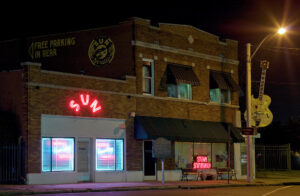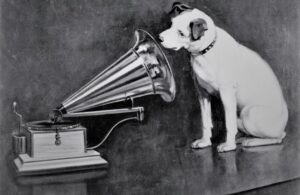Available as a Complete and Free Download
This project is an accessible exploration of the central role of auditory experience in American life, building from two core themes: that sound is the newest of our senses, having been reborn in twentieth century audio technologies; and that we vastly underrate spoken language and music as vital portals to the culture. (4.1 MB PDF, 320 pages)
- Can infants in the womb hear their parents?
- Why is permanent hearing damage so common?
- Why should hearing be known as the first sense?
- What is a “sonic gun,” and how does it disrupt communications?
- Why are restaurants so loud?
- What is the relationship between brain “plasticity” and language learning?
- What kind of sound is an ingenious way some convenience stores discourage loitering?
- How did Motown create their unique sound?
- What does an ideal listening space look like?
- How is baseball’s Citizen’s Bank Park in Philadelphia made to be loud?
- What is the sonic “mode” of a room, and why does it matter?
- Who owns the rights to the song, “Happy Birthday?”
- What is the most common complaint of residents living in New York City?
- How long does it take for sound to travel the length of Notre Dame Cathedral?
- How did Barbara Streisand help revive interest in movies shown in theaters?
“Gary Woodward argues for the central importance of human hearing and celebrates our auditory prowess. Woodward, a specialist in communication theory, ranges far afield here, covering anatomy, technology, psychology, and culture and shedding light on topics from sound recording to film scores to the weaponizing of sound. Every chapter provides entertaining and illuminating information about the centrality of hearing and sound to human experience.” Amazon Reviews
⇓ Double Click to access the book below ⇓
https://theperfectresponse.pages.tcnj.edu/files/2025/07/Sonic-Imperative-final.pdf
Also available at Amazon.com
![]()
Chapter List
-

Sun Records, Memphis, where Elvis Presley got his break in the music business. Sun Studio was opened by rock pioneer Sam Phillips in 1950. Introduction
Part I: Human Equipment
- Hearing and the Motivation to Listen
- Orality: Breaking the Codes of Culture
Part II: Natural, Organized and Disorganized Sound
- Functional Ambiance and the Clutter of Noise
- Capturing and Storing Sound
- The Refuge of Music
- The Wildcard of Acoustic Space.
-
 Hollywood and the Art of Sound Design
Hollywood and the Art of Sound Design
Part III: The Assault on Hearing
- Weaponizing Noise
- Creating Aural Islands
- Conclusion: Preserving the Most Consequential Sense

